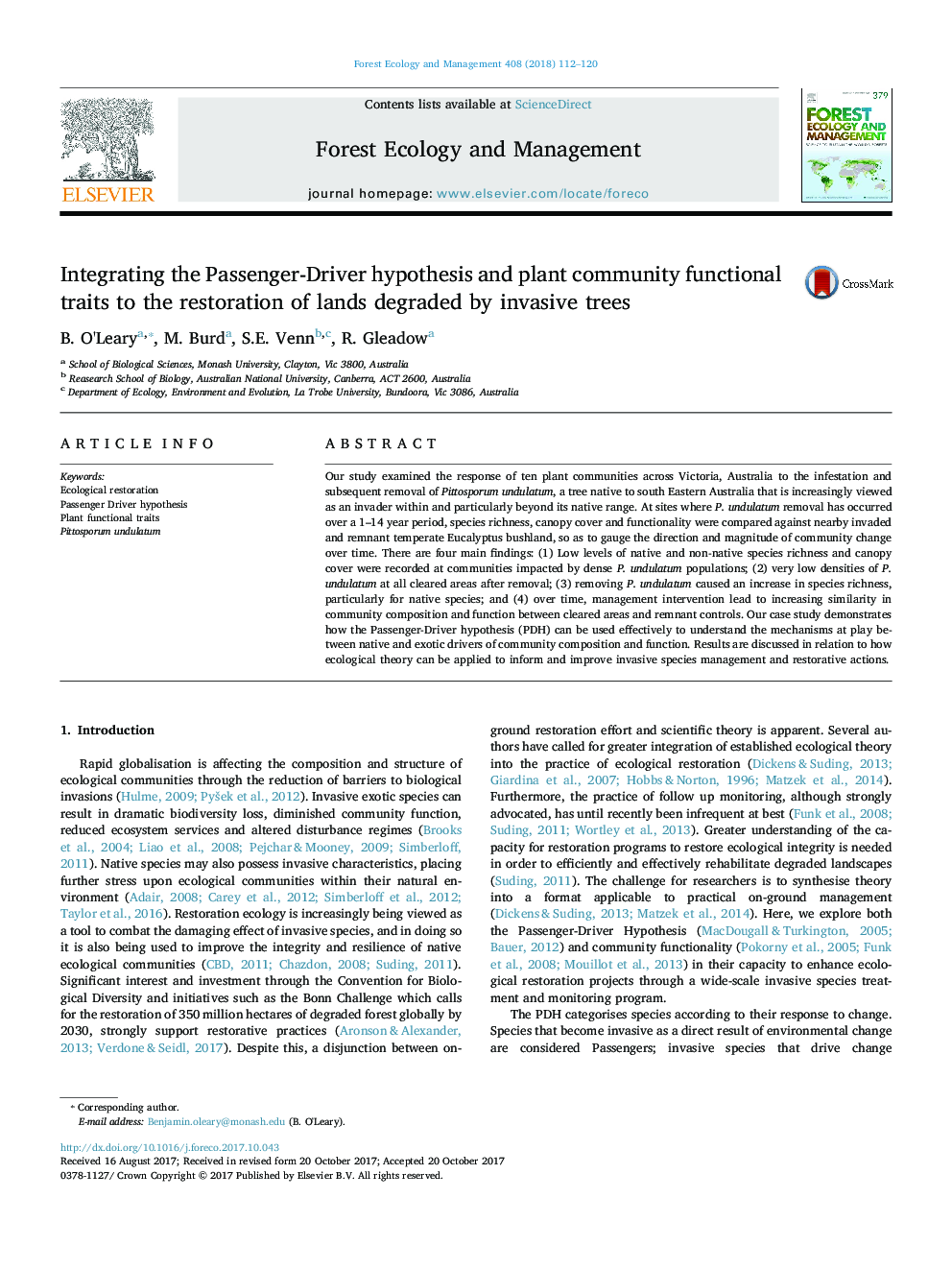| Article ID | Journal | Published Year | Pages | File Type |
|---|---|---|---|---|
| 6541911 | Forest Ecology and Management | 2018 | 9 Pages |
Abstract
Our study examined the response of ten plant communities across Victoria, Australia to the infestation and subsequent removal of Pittosporum undulatum, a tree native to south Eastern Australia that is increasingly viewed as an invader within and particularly beyond its native range. At sites where P. undulatum removal has occurred over a 1-14 year period, species richness, canopy cover and functionality were compared against nearby invaded and remnant temperate Eucalyptus bushland, so as to gauge the direction and magnitude of community change over time. There are four main findings: (1) Low levels of native and non-native species richness and canopy cover were recorded at communities impacted by dense P. undulatum populations; (2) very low densities of P. undulatum at all cleared areas after removal; (3) removing P. undulatum caused an increase in species richness, particularly for native species; and (4) over time, management intervention lead to increasing similarity in community composition and function between cleared areas and remnant controls. Our case study demonstrates how the Passenger-Driver hypothesis (PDH) can be used effectively to understand the mechanisms at play between native and exotic drivers of community composition and function. Results are discussed in relation to how ecological theory can be applied to inform and improve invasive species management and restorative actions.
Related Topics
Life Sciences
Agricultural and Biological Sciences
Ecology, Evolution, Behavior and Systematics
Authors
B. O'Leary, M. Burd, S.E. Venn, R. Gleadow,
